Anya M. Wassenberg's Blog: Art & Culture Maven, page 3
December 10, 2024
21st Century Grunge JBNG: Run (Independent/JBNG Music Ltd / 1 November 2024)
JBNG: Run
(Independent/JBNG Music Ltd / 1 November 2024) Stream It On Spotify
Jaben John Groome leads grunge-rock fusion band JBNG. Groome is a bass player who started singing just last year, and Run is the second album for the project.

JBNG's Run offers a kind of friendlier version of grunge rock (they're calling it "grunge-rock fusion"). There's a melodic focus to the mix of guitars and synth, in other words.
Interesting rhythms pepper tracks like The Narrator, a song that wouldn't be miscast as pop rock. That contrasts with the straight up rock feel of songs like Brutus and Disconnection, or Out To Get You, which leans into metal.
Jaben Groome's raspy vocals are delivered with personality, adding weight to the lyrics. They talk about modern life, with titles like Disconnection, Barely Know You, and See You In Hell.
You get the picture.
A nice musical chemistry characterizes the band, and there's a sense of humour underneath all the dark observations. The tight musicality lights up all the tracks throughout the full-length album.
JBNG are based in British Columbia, and along with Groome on vocals, the band is: Alejandro Yoshizawa on lead guitar, Jonathon Goldie on Rhythm, Tim Charman on bass and Matt Koopman on drums.
For Groome, learning to sing began as a coping skill to manage symptoms of his bipolar diagnosis.
"I learned it helps, switching the nervous system out of fight or flight mode," he explains in a statement.
If you're fond of the genre, you'll love this polished and updated version.
Personnel: Jaben Groome Vocals; Alejandro Yoshizawa Lead Guitar; Jonathon Goldie Rhythm; Tim Charman Bass; Matt Coopman Drums
Websites:
Official Website: JBNG.CAFacebook: https://www.facebook.com/jbngmusicTwitter: https://x.com/jbngmusicInstagram: https://www.instagram.com/jbngband/Video Game Composer Goes Singer-Songwriter | Megan McDuffee: Crimson Legacy (Independent / 11 October 2024)
Megan McDuffee: Crimson Legacy
(Independent / 11 October 2024) Stream It On Bandcamp
Singer-songwriter may be technically correct as far as musical terms go, but if it conjures images of track upon track of solo vocals with acoustic guitars, it's more of a misnomer. Crimson Legacy is the second album for Megan McDuffee, a long time video game and film composer, and sound engineer.

Lovely Psycho illustrates her appeal. An interesting sense of rhythm underpins the music, overlaid with moody synths and contrasted by her sweet, breathy vocals. It's danceable without resorting to anything rote, always with something unexpected up its sleeve.
Imagination in the use of various synth and electronic elements is to be expected with McDuffee's background, and it's the signature element that elevates the music above the usual edm.
In terms of mood, the tracks range from the haunting edge of Lovely Psycho and Your Demise to the more straightforward Anywhere With You, and Army of Me, with its heavier rock edge. There's even an acoustic version of Forgive Me as a stripped down track with that classic combination of simple acoustic guitar and unprocessed vocals - but it achieves the same kind of moody effect via harmony and melody alone.
McDuffee has been working in the film and gaming industries for more than 15 years, winning multiple awards for her scores, including 'River City Girls'.
The Seattle-based artist was a member of a world-travelling choir for more than a decade, and graduated from the University of California Santa Cruz with a Bachelor of Arts in Film Scoring and a minor in Electronic Music. With a desire to further her education, she went on to the Berklee College of Music, earning a Master's Certificate in Orchestration for Film and TV.

She talks about the release in a statement.
"I was inspired by a wide range of artists in crafting this album such as Puscifer, Massive Attack, Nine Inch Nails, Deftones, The Cure, IAMX, Infected Mushroom, and Zeromancer."
Genre-wise, she's about giving listeners something unexpected.
"With 'Crimson Legacy,' I wanted to capture the surrealness and essential weirdness of the 1970s - 1990s movies I grew up with. Films like Labyrinth, Dark City, Little Nemo: Adventures in Slumberland, Legend, A Clockwork Orange, and Rocky Horror Picture Show. They all had a quintessential darkness, griminess, and strangeness to them that transported me to a realm of dreams and nightmares. That’s what I aim to do with my album - to take the listener into an edgy, disturbing-yet-alluring fever dream filled with lust, revenge and whimsy. 'Crimson Legacy' is for all my fellow weirdos, witches, warlocks, and creatures of the dark corners of the earth."
You don't have to love gaming to appreciate the cinematic and atmospheric qualities of the music.
Personnel: Megan McDuffee/Composer, Lyrics, Vocals, Producer, Mix Engineer; RichaadEB/Guitar on track “Forgive Me”; AJ Lemos/Guitar, Bass; Jordan Fiction/Guitar, Lyrics, Vocals on track “Anywhere With You”; TELLE/Lyrics, Vocals on “Twisted”; ALEX/Additional production on “Your Demise” and “Cult Movie”; Simon Chylinski/Guitar, production on “Army Of Me”
Tracklist:
Lovely PsychoAnywhere With YouCult MovieEntityArmy Of MeForgive MeYour DemiseTwistedBreakForgive Me (Acoustic Version)Websites:
Official Website: https://meganmcduffee.comInstagram: https://instagram.com/megmcduffeeGoth Duo | Raudiver: Leave Before Dark (Geodesic Records / 13 September 2024)
Raudiver: Leave Before Dark
(Geodesic Records / 13 September 2024) Stream It On Spotify
Synth-heavy danceable beats mix with ethereal vocals to create the signature sound of Raudiver. The duo of Lauren Villarreal and Charles Eddy are a married couple based in Houston, and in Leave Before Dark, they explore the range of goth, darkwave and shoegaze, with a dive into post punk.
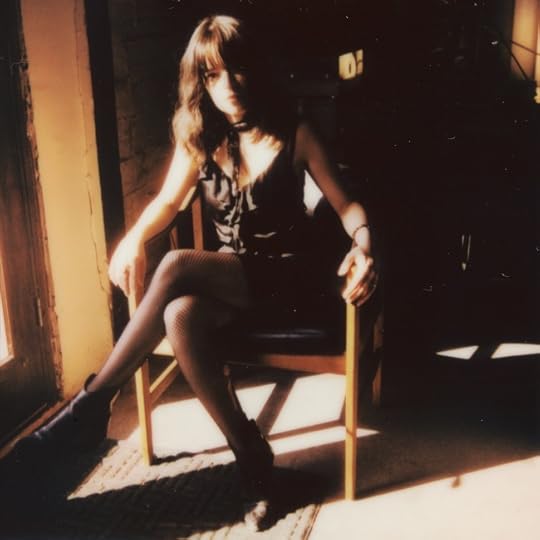
The results are earworm worthy, from the hypnotic beats of Leave (which exorts its listeners, If you love her, Leave...) to the spookier vibe of songs like Mary Tombs, and the moody Find a Heaven.
It's territory well suited to Lauren's vocals, which emerge as fluid and expressive even after the post production. She can range from a sweet high range to a darker lower end with just the right sensibility for this kind of music.
The vocals might take the spotlight, but underneath, attention is paid to the music too. Both are credited with playing synths and programming, and they create multi-layered soundscapes - most evident in the instrumental Interlude.
A highlight for me was No Sun Rising, which ventures into experimental territory. Spoken word combines with vocal flourishes over a malleable track of beats and sounds. It's atmospheric and effective.
The duo's name comes as an homage to the work of parapsychologist and writer Konstantins Raudive, who wrote the definitive book on the phenomenon known as EVP (Electronic Voice Phenomenon). If you've seen the horror movie, it's the theory that the voices of the dead can be picked up by a radio frequency.
Goth seems like a limiting term for the imaginative electronic pop created by this talented duo.
Personnel: Lauren Villarreal Eddy – Vocals, lyrics, synths, guitar, programming, and production; Charles Eddy – Synths, guitar, programming, production
Tracklist:
LeaveMary TombsTrue FaithFind a HeavenInterludeCold CallingNo Sun RisingIf I Should WakeRazor WireNow You Play to WinBleachLinks
Website: https://geodesicrecords.com/raudiverOfficial Website: https://www.raudiver.com/Facebook: https://www.facebook.com/raudiverTwitter: https://x.com/raudiverInstagram: @raudiverTikTok: @raudivermusicNew Age Americana | The New Students: Little Blue Dot (Independent / 30 August 2024)
The New Students: Little Blue Dot
(Independent / 30 August 2024) Stream It On Spotify
Vocal harmonies and acoustic instruments create the Americana soundscape of The New Students, but it's a slot they fill with imagination.

They tell stories about dirt farmers and driving through Texas. From Black Earth Country:
You can take the boy from the plough and the field, J
But you can't take the hunger from his eyes
Americana gets a more modern treatment in tracks like Fly Home, a love song with a sense of place.
Different vocalists add to the multi-textured tracks, along with a range of influences. In Whale Boy, a swingy syncopation tells a very modern story about fame eating a celebrity alive.
Traditionalists will be happy with tracks like Vermont Maple Candy, a love song to a slow country waltz, or the simple, stripped down approach of A Good Man Is Gone.
They tackle social issues, in the solid roots tradition, in songs like The Refugee, a beautiful four-part vocal a cappella piece, and Little Blue Dot.
The success of the New York based band's last album, 2020's Quarantunes, with their signature combination of contemporary folk and Americana with social commentary, lent impetus to the creation of this, their second release.

The band comments in a statement.
"This album has been percolating with us for a long time - we wrote one of the songs over a decade ago, some we've been playing live for a few years, and some are more recent."
It's clear they take inspiration from the golden age of folk from the 1960s and 70s, with an updated sense of urgency.
"These songs speak to what we think are some of the universal concerns we all have on this little blue dot floating in space: fear for the future of our planet, the vanishing American Dream, love found and lost. We want to write songs that spread human empathy, but also make you want to sing along."
Personnel:
Briana Carlson-Goodman – VocalsJustin Flagg – Vocals, Guitar, BanjoMatthew Gelfer – Vocals, Fiddle, Mandolin, GuitarSam Gelfer – BassBeau Moore – Guitar, MandolinPaul Pearl – DrumsTracklist:
1. Black Earth Country2. Fly Home3. Farewell4. Whale Boy5. Madelena6. Greta's Song7. Vermont Maple Candy8. Jackson's Holler9. Today A Good Man Is Gone10. The Refugee11. Tell Me12. Little Blue DotWebsites:
Official Website: https://www.thenewstudents.com/Facebook: https://www.facebook.com/thenewstudents/Twitter: https://x.com/TheNewStudentsInstagram: https://www.instagram.com/thenewstudentsOutta Nashville | Retrosaint: False Start (Secondary Renaissance / 27 August 2024)
Retrosaint: False Start
(Secondary Renaissance / 27 August 2024) Stream It On Spotify
False Start is a new single by Retrosaint, a band from Tennessee. The lyrics are an upbeat take on the resilience of love with a nicely poetic sensibility.
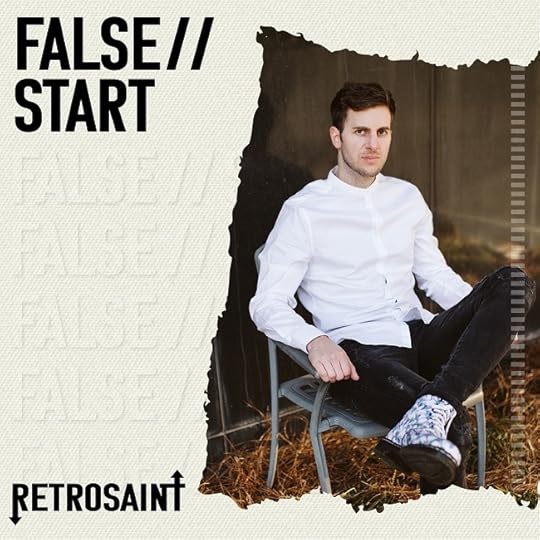
Their home base is Nashville, and the song not far from country. But, with an edge of old fashioned Americana at its heart, the song comes as a bit of a new direction for the band.
Retrosaints is fronted by singer, songwriter and multi-instrumentalist David Ross. The song has a hummable refrain, and an emotional and musical progression that transcends both country and Americana.
Ross has an amiable tenor with enough power and expression to make it work. The multi-layered instrumental track, though, is the real star of the show. Ross, a classically trained pianist, appeared on the reality TV show American Supergroup for its pilot season.
Along with Ross, the band includes Jonny Lutz on electric guitars, bass and drums. Lutz also produced the track. Frances Takemoto provided the fiddle-style violins.
Ross talks about the inspiration for the song in a statement.
"Sometimes good relationships come to an end, for whatever reason. And sometimes, we think we’ve reached some big milestone in life when in fact, the journey hasn’t even started yet. That’s what "False Start" is about. (No, it’s not a song about football. Har har) I was still processing a breakup, while also witnessing a loved one’s marriage fall apart. Writing this song was the best response I could come up with."
The track marks a new way of working for the band as well.
"This song is the first commercial release to come out of my home studio (still yet-to-be-named) in Nashville," says Ross, "a project that was several years in the making. Besides the mastering, the only people involved in creating it were close friends of mine–a departure from my past approach to the recording process. I’m super proud of this fact!"
Personnel:
David Ross – Songwriter, Vocals, Acoustic Guitar, KeyboardsJonny Lutz – Electric guitars, Drums, BassFrances Takemoto – ViolinWebsites:
Facebook: https://www.facebook.com/retrosaintsongsInstagram: instagram.com/retrosaintsongsProgrock Trio | The Wrong Sides: The Singles (2023/2024)
The Wrong Sides: The Singles (2023/2024)Elephant Spaceship, CHASING THƎ WЯONG INSANITY, Sour Sea Stream Them On Spotify
Three new tracks by The Wrong Sides prove the prog rock trio as an art form is anything but dead.
"Each of these tracks provided a way for us to explore the sonic landscape of this lineup," says the trio in a statement.
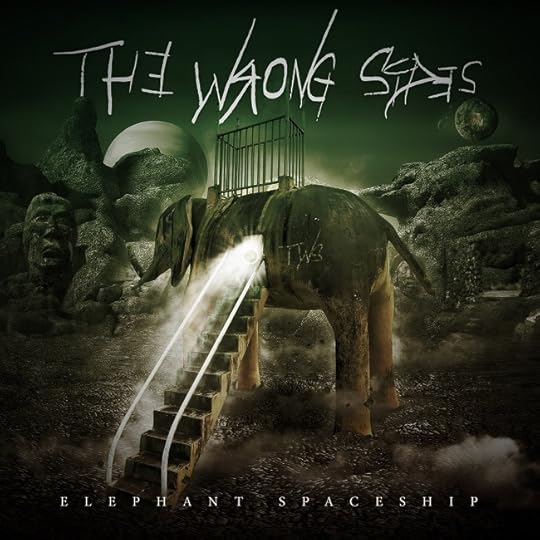
The Wrong Sides are a progressive metal band from Puerto Rico, in a classic trio lineup of bass-drums-guitar. They're usual M.O. is to release a series of singles, culminating in an album, a habit they've developed since forming in 2019.
Elephant Spaceship is prog rock with a polished edge, compleat with all those impressive arpeggiated chords and jazzy harmonic progressions. There's a lot of notes for just one melodic instrument, in other words. The band calls it "a galactic somewhat freeform prog metal jam".
What keeps it interesting - and keeps it from sliding into musical navel gazing - is the passion you can feel for the music, and the tight playing between the trio. The band also has a nice sense of structure, and how to maintain the momentum in a way that sounds effortless.
Like the Western art music that is its cousin, the form explores a series of themes and variations.
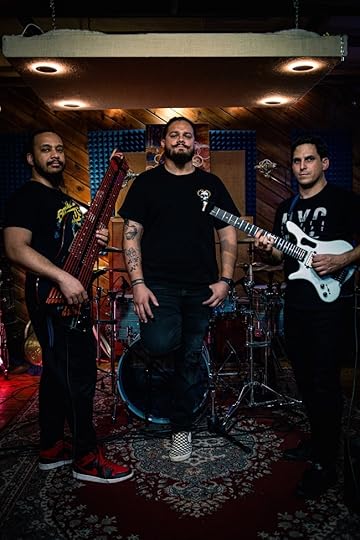
Sour Sea builds a sense of urgency through interwoven themes and variations that progress to a climax and then slow down, strip back to melody and simpler rhythmic accompaniment for an intriguing middle section... only to slide back into guitar heavy metal.
Each of the instruments gets its chance to take the spotlight. In Sour Sea, it's a mesmerizing fretless bass solo by Joan Torres that tears through the last part of the track.
In Chasing The Wrong Insanity, the drums take over the wheel. Always present, they're more demure in the other tracks. There's a nice bit in the song where the bass and drums trade riffs back and forth. Torres arranged the track as inspired by the video game Maximum Carnage.
Through impeccable musicianship, the trio manages effects that most would routinely try to recreate via programming.
Personnel:
Israel Romero - GuitarJoan Torres - BassJosé Linares - DrumsTracks:
Sour Sea (February 17, 2023)CHASING THƎ WЯONG INSANITY (October 16, 2023)Elephant Spaceship (March 11, 2024)Websites:
Official Website: https://linktr.ee/thewrongsidesFacebook: https://facebook.com/thewrongsides/Twitter: https://twitter.com/thewrongsidesInstagram: https://www.instagram.com/thewrongsides/Atmospheric Electronic | Danny Peck: Where Hope Goes, Fear Follows
Danny Peck: Where Hope Goes, Fear Follows
(Independent / 14 August 2024) Stream it on Spotify
It comes as no surprise to learn that Danny Peck is both musician and scientist after listening to a few of the tracks on his album Where Hope Goes, Fear Follows.
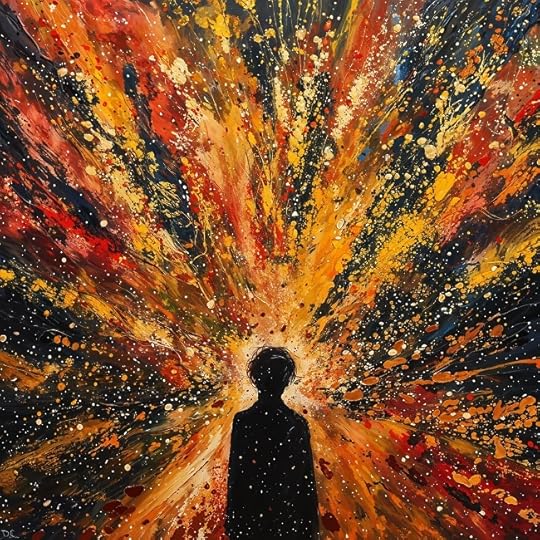
The album consists of instrumental tracks characterized by a cinematic sense of emotional flow, along with a mastery of electronic music creation. They're architecturally sound as well as emotionally stirring.
Peck goes by several different names, or has over the years as an artist, including dep and A Defiant Heart. This time, he's releasing the album under his real name - the dude who's been researching the physics of music for three decades or so.
He's a software developer and engineer, but while you may get distracted by the sheer variety of sounds and effects he can produce, you'll also be swept up in the musicality of the tracks.
Each takes you on a trip with an energy that builds and leads to a kind of ecstatic release, or a hypnotic, peaceful state.
The new album marks a departure from his previous work. Peck talks about his development as a musician in a statement.
"'Where Hope Goes, Fear Follows' is about starting over, it's about growing older and facing one's intensifying thoughts around legacy and mortality. I made this while going through a lot of changes in my life, and honestly it's also a lifetime culmination of my own creative process.
"I've spent the better part of the last 3 decades making music in one form or another. I started experimenting in the 90s, fiddling around with trackers in MS-DOS before I started using notation software in Windows."
Changes in his life led to a new way of thinking.
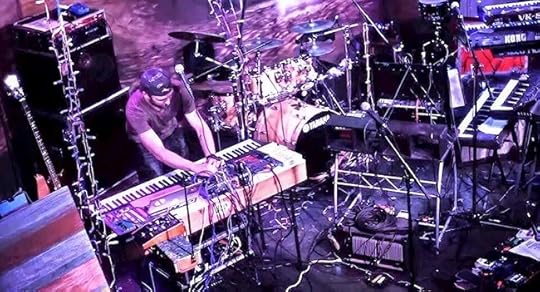
"Fast forward to 2023: my wife and I moved to a small town in Michigan, and I decided, by both necessity and intuition, that it was time to start over. I built my studio from the ground up, replaced all of my existing software, started over with new hardware and equipment. I kept my trusty Korg piano keyboard, but everything else was a complete reinvention.
"I moved on from tracker-driven music making software. For me, this was the key. Tracker sequencers, I realized, forced me into a rigid grid, stifling my creativity, and forcing me down the same path with each song again and again. Everything I made, to me largely sounded and felt the same. I needed a change."
The atmospheric music is perfect for work, study, or relaxing with a book.
Tracklist:
1. To Rise and Fall 2. We Can Live Underground Forever 3. The Gate 4. Controlled Flight 5. Time is Not Real 6. There Must Be Something Special When We're Gone 7. Dawn 8. In the Pine Trees 9. The Edge of Reason 10. Where Hope Goes, Fear FollowsLinks
Official Website: https://dannypeck.comTwitter: https://x.com/depDecember 4, 2024
Leading Artists in the American South Confront Today's Issues At The Gibbes Museum of Art
From a media release
Leading Artists in the American South Confront Today's IssuesAt The Gibbes Museum of Art
Landmark Group Exhibition at the Gibbes Museum of Art Honors the 15 Winning Artists of the 1858 Prize for Contemporary Southern Art
Check it out hereCHARLESTON, SOUTH CAROLINA: Six more weeks remain to see this powerful group exhibition at the Gibbes Museum of Art, on view now until January 12.
The show is titled Celebrating the 1858 Prize for Contemporary Southern Art, and is the culmination of 15 years of one of the most prestigious art prizes in the Southeastern United States. The exhibition includes paintings, sculptures, video, textiles, photography, digital art, mixed media, and installations.
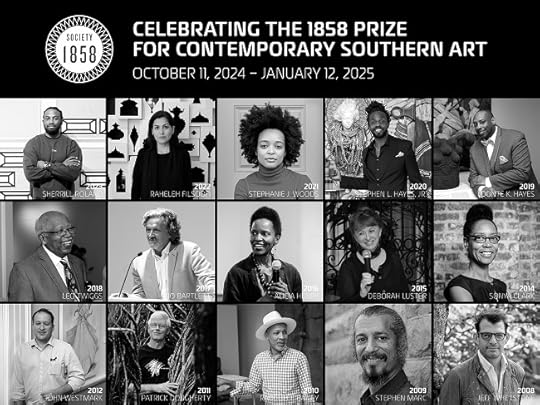 Clockwise from top: They Combined Beauty, by Stephen L. Hayes Jr. (2020 winner); Wave After Wave, by John Westmark (2012 winner); Lavender Notes, by Stephanie J. Woods (2021 winner); The Omen, by Leo Twiggs (2018 winner); Charleston, by Radcliffe Bailey (2010 winner); Hurtsboro, by Bo Bartlett (2017 winner).
Clockwise from top: They Combined Beauty, by Stephen L. Hayes Jr. (2020 winner); Wave After Wave, by John Westmark (2012 winner); Lavender Notes, by Stephanie J. Woods (2021 winner); The Omen, by Leo Twiggs (2018 winner); Charleston, by Radcliffe Bailey (2010 winner); Hurtsboro, by Bo Bartlett (2017 winner).This is the first time the Museum has created an original exhibition of this scope, featuring all of the winning artists from each year since the inaugural prize of 2008.
The co-curators of the exhibition are Sara Arnold, Jordan Brown, and Brenna Reilley.
The 2009 Prize winner Stephen Marc (his artwork is pictured below) states: “It is invaluable to see how the South’s diverse cultural heritage and collective regional identity are creatively expressed through explorations of everyday life, historical references, and visions of the future.”
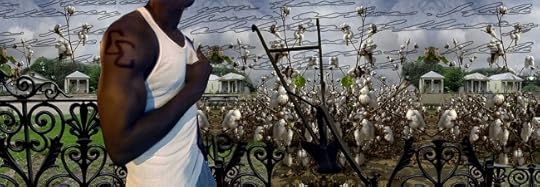 Untitled (2002), by Stephen Marc, the 2009 Prize winner. Gibbes Museum purchase/partial gift by the artist.
Untitled (2002), by Stephen Marc, the 2009 Prize winner. Gibbes Museum purchase/partial gift by the artist.The works in this group exhibition explore a striking variety of themes, including: resilience; cultural heritage; the African Diaspora; feminist theory; the relationship between humans and their environment; incarceration; and the physical, spiritual and artistic journeys these artists convey, with their creative strength to conjure hope.
The juried competition awards $10,000 each year to an artist whose work contributes to a new understanding of art in the South.
Each winner’s work is exhibited at the Museum for a full year.
“These artists have the power to illuminate how the past unfolds and impacts our present, a recurring theme in their works,” says Sara Arnold, Director of Curatorial Affairs at the Gibbes Museum of Art.
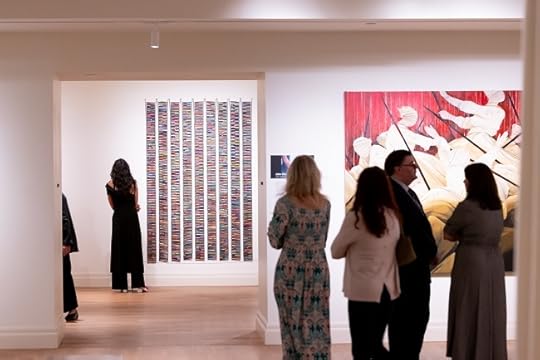
More exhibition programming continues with two new exhibition tours for the public to enjoy, on Dec. 11, and on Jan. 8. Both events feature intimate insider tours led by special guests who will share their insights about these artists, and their personal experiences in helping to steer the success of this competition.
The Gibbes Museum is a beacon in the American South since it was established in 1858, and is located in the heart of Charleston’s Historic District.
The exhibition features 27 works by 15 Prize winners
Sherrill Roland (2023 winner)Raheleh Filsoofi (2022 winner)Stephanie J. Woods (2021 winner)Stephen L. Hayes Jr. (2020 winner)Donte K. Hayes (2019 winner) Leo Twiggs (2018 winner)Bo Bartlett (2017 winner) Alicia Henry (2016 winner)Deborah Luster (2015 winner) Sonya Clark (2014 winner)John Westmark (2012 winner) Patrick Dougherty (2011 winner)Radcliffe Bailey (2010 winner) Stephen Marc (2009 winner)Jeff Whetstone (2008 winner)Through the years, several works by winners and finalists have been acquired by the Gibbes. Some winners have received awards from the Guggenheim Memorial Foundation, the Joan Mitchell Fellowship, and the Pollock-Krasner Foundation Grant.
Some are in the permanent collections of The Metropolitan Museum of Art, The National Gallery of Art, and Art Institute of Chicago.
“The Gibbes Museum of Art is thrilled to honor these leading Southern artists who are reshaping and redefining American art,” says Angela Mack, the President and CEO of the Gibbes Museum of Art.
“This artist-centric initiative builds ongoing museum relationships with these creatives, to tell their contemporary stories.”
“These artists have continued to garner accolades regionally, nationally, and internationally. Our team at the Museum is deeply committed to spearheading this vital platform for Southern artists, and we are proud of this competition’s growing prominence over the past 15 years,” adds Angela Mack.
Artists from Alabama, Arkansas, Florida, Georgia, Kentucky, Louisiana, Mississippi, North Carolina, South Carolina, Tennessee, Virginia and West Virginia are eligible to apply. Read more details about the artists and finalists spanning the past 15 years of this competition at ‒ www.gibbesmuseum.org/1858-prize.
The 1858 Prize for Contemporary Southern Art is presented by Society 1858, a member auxiliary group of the Gibbes Museum. This group of dynamic young professionals supports the Museum with social and educational programs tailored for up-and-coming art patrons.
Society 1858 takes its name from the year that the Carolina Art Association was established (the Museum's art collection, which began in 1858).
The 2024 winner of the competition was recently announced, honoring the multi-disciplinary artist Demond Melancon. His work will be on view separately starting in February 2025, for a full year at the Museum.
This exhibition is also made possible thanks to the support of Blue Cross Blue Shield of South Carolina, the South Carolina Arts Commission, the Jane Smith Turner Foundation, the City of Charleston, the Gaylord and Dorothy Donnelley Foundation, and the South Carolina Department of Parks, Recreation and Tourism.
In the spirit of the 1858 Prize, the Gibbes is launching new initiatives to support the next wave of Southern artists with a new professional development series in the Spring.
Highlights from the exhibitionRadcliffe Bailey (1968-2023) was the 2009 Prize winner. He was known for monumental assemblages, paintings, and prints that explore race, memory, music, and familial connections.
Bailey created this large-scale mixed media painting titled Charleston (pictured bellow) using shipping tarpaulin as his canvas.
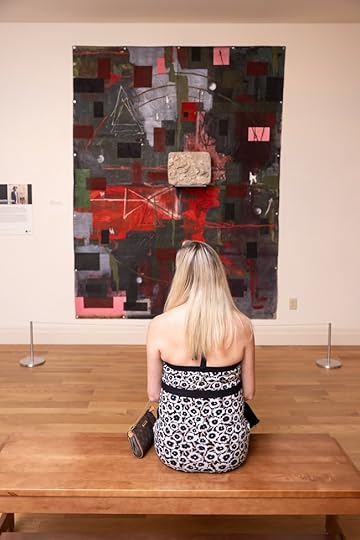 Installation photo of the artwork titled Charleston (2021), by Radcliffe Bailey, the 2010 Prize winner. Mixed media, flock, oil stick, acrylic paint on tarp with steel shelf supporting a tabby concrete block. On loan courtesy of the Estate of Radcliffe Bailey and Jack Shainman Gallery, New York. Installation photo from the exhibition opening, by MCG Photography.
Installation photo of the artwork titled Charleston (2021), by Radcliffe Bailey, the 2010 Prize winner. Mixed media, flock, oil stick, acrylic paint on tarp with steel shelf supporting a tabby concrete block. On loan courtesy of the Estate of Radcliffe Bailey and Jack Shainman Gallery, New York. Installation photo from the exhibition opening, by MCG Photography. Bailey's quilt-like patchwork of color shapes in the artwork titled Charleston alludes to themes of geographical displacement ‒ layered with text and imagery inspired by antique maps, family trees, travel logs, and Haitian vévé spiritual diagrams.
Near the center of the canvas is a block of tabby concrete, a building material used in the construction of homes and buildings along the South Carolina and Georgia coast prior to the Civil War. A mixture of lime, sand, water, and shell, tabby blocks were crafted by enslaved laborers.
Sonya Clark is the 2014 Prize winner. She is a fiber and mixed media artist. She works with strands of human hair, combs, coins, seed beads, and thin threads to give voice to the complexity of American identity and history.
In Clark's artwork (pictured below), she utilizes seven Afro wigs and thread-wrapped combs, with the colors of the rainbow to honor and amplify diversity among Black women.
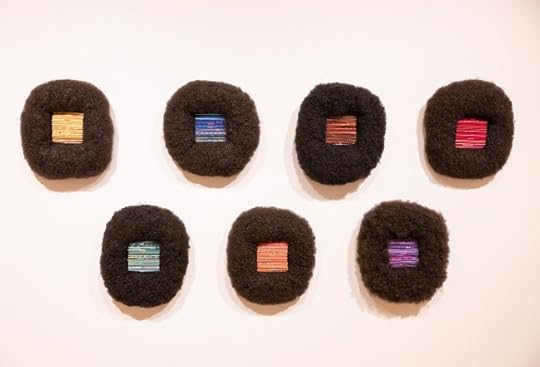 Installation photo of For Colored Girls, A Rainbow (2020), by Sonya Clark, the 2014 Prize winner. Wigs, cast plastic combs, and wrapped thread. On loan from the artist and Goya Contemporary, Baltimore. Installation photo by MCG Photography, from the exhibition opening.
Installation photo of For Colored Girls, A Rainbow (2020), by Sonya Clark, the 2014 Prize winner. Wigs, cast plastic combs, and wrapped thread. On loan from the artist and Goya Contemporary, Baltimore. Installation photo by MCG Photography, from the exhibition opening.Clark's artwork in this exhibition is a tribute to the 1976 Broadway play for colored girls who have considered suicide / when the rainbow is enuf by Ntozake Shange.
The groundbreaking, award-winning play explores the lives, struggles, and resilience of Black women, featuring seven female actors identified only by the colors they wear.
Clark honors contemporary craftspeople like hairdressers, and notable African American figures.
“Sonya Clark sculpts, shapes and winds thread into hair power, a thrilling metaphor.” ‒ Scott Wilson, The Visual Arts Journal
John Westmark is the 2012 Prize winner. His wife and two daughters are the true inspiration behind his work. After observing his wife using a pattern for a sewing project, his artistic vision took a new direction. Pictured below is his work Wave After Wave.
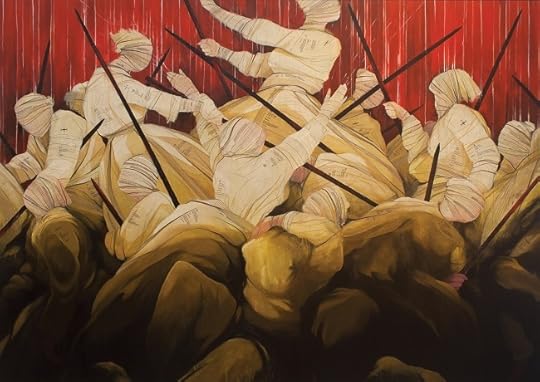 Wave Upon Wave (2014), by John Westmark, the 2012 winner. Acrylic, quilting pins, paper sewing patterns on canvas. Museum purchase.
Wave Upon Wave (2014), by John Westmark, the 2012 winner. Acrylic, quilting pins, paper sewing patterns on canvas. Museum purchase.Westmark's paintings depict courageous women, some portrayed as stoic martyrs and others as warriors engaged in conflicts of rebellion.
Intrigued with the pattern design and the cultural meaning of the pattern itself, Westmark began reading feminist theory and creating collage studies with the sewing patterns. His intense exploration led to these dynamic, large-scale, mixed-media figurative paintings.
By utilizing sewing patterns to compose his female figures, Westmark creates anonymous yet powerful women that challenge the historical understanding of “women’s work.”
Deborah Luster is the 2015 Prize winner. In 1988, Luster’s mother was murdered, and as a way of coping she turned to photography and became known for investigating violence, place, and prison.
Pictured below is an installation photo from the exhibition, of her series titled Angola History Project (photos of the buildings and history of the notorious Angola Prison in Louisiana).
Angola takes its name from an antebellum plantation where for generations thousands of enslaved people produced cotton and sugar cane. After the Civil War, cotton production continued through a convict leasing program. The property formally became a state prison in the early 1900s and today is one of the largest prisons in the country.
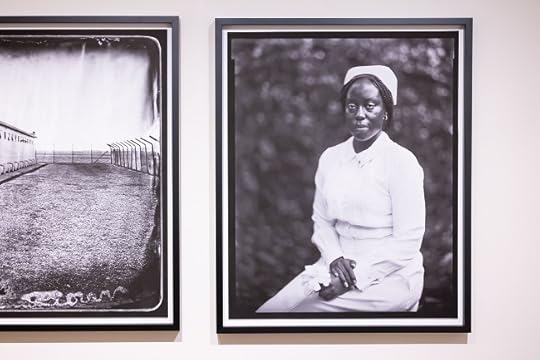 Installation photo from the exhibition of the series titled Angola History Project, by Deborah Luster (photos of the buildings and history of the notorious Angola Prison in Louisiana). Archival pigment print. Loan courtesy of the artist. Installation photo by MCG Photography, from the exhibition opening.
Installation photo from the exhibition of the series titled Angola History Project, by Deborah Luster (photos of the buildings and history of the notorious Angola Prison in Louisiana). Archival pigment print. Loan courtesy of the artist. Installation photo by MCG Photography, from the exhibition opening.In the 2017 photograph above by Luster, inmate Taece Defillo poses as Nurse Mary Margaret Daugherty in a play created by the prisoners. The original, real-life Nurse Daugherty was an Irish immigrant working at the prison in the 1950s who exposed the deplorable conditions at Angola, leading to much-needed reforms.
Bo Bartlett is the 2017 Prize winner and is acclaimed for his large-scale paintings that explore American life and cultural heritage.
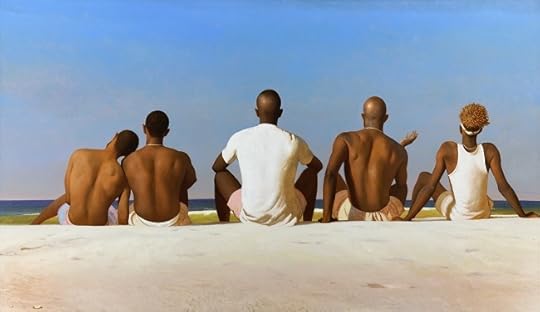 Hurtsboro, by Bo Bartlett, the 2017 winner. Oil on linen (2021). Museum purchase with funds from an anonymous donor.
Hurtsboro, by Bo Bartlett, the 2017 winner. Oil on linen (2021). Museum purchase with funds from an anonymous donor. Bartlett's large-scale painting Hurtsboro (pictured above) is inspired by his memory of hitchhiking as a teenager in the segregated South. Hurtsboro conveys the beauty of friendship, and the difficulties faced by Black men in America.
Raheleh Filsoofi is the 2022 Prize winner.
For her multimedia installation Imagined Boundaries (pictured below) the artist invited more than 100 Charlestonians for video portraits she embedded into each of the boxes using iPads. Her video portrait subjects range in age from three months to 92.
The view portals reference Iranian pottery. Her work synthesizes socio-political statements, here interconnecting Southerners to Iran’s culture across boundaries.
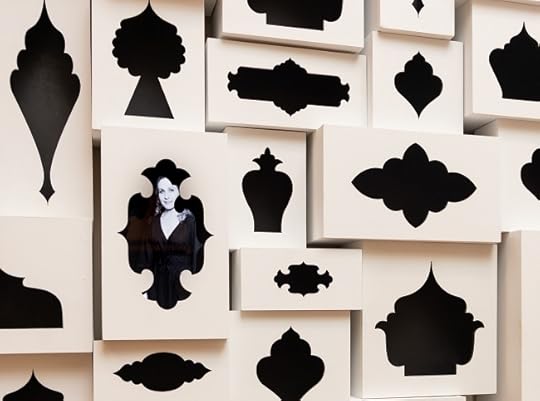 Detail view of the multimedia installation Imagined Boundaries, by Raheleh Filsoofi. Commissioned by the Gibbes Museum of Art.
Detail view of the multimedia installation Imagined Boundaries, by Raheleh Filsoofi. Commissioned by the Gibbes Museum of Art.Filmmaker Jeff Whetstone won the inaugural Prize in 2008. He has explored the relationship between humans and their environment since he received a Zoology degree in 1990.
His video The Batture Ritual examines the intersection of economy and ecology at a single point along the lower Mississippi River. The video installation and accompanying photographs vividly capture the rhythms of local families, fishermen, nature, and cargo ships.
You can check it out at this link .Leo Twiggs is the 2018 Prize Winner. The Gibbes first presented the work of Leo Twiggs almost 50 years ago, in a 1976 solo exhibition.
Twiggs was the first African American student to receive a Doctorate of Arts from the University of Georgia, and the first visual artist to receive the Elizabeth O’Neill Verner Award (Governor’s Trophy) for outstanding contributions to the arts in South Carolina.
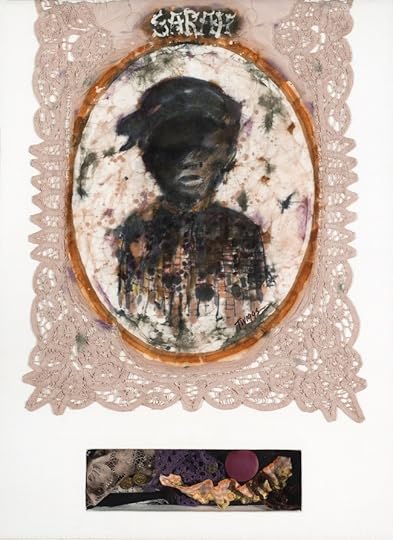 Sarah Remembered (1997), by Leo Twiggs, the 2018 Prize winner. Batik and mixed media paint on board. Museum purchase.
Sarah Remembered (1997), by Leo Twiggs, the 2018 Prize winner. Batik and mixed media paint on board. Museum purchase.About the Gibbes Museum of Art
The Gibbes Museum of Art, a beacon in the American South for arts and culture since 1858 when it was originally the Carolina Art Association, is heralded as one of the earliest and most longstanding arts institutions in the United States.
The Museum’s collection spans 350 years, and features some of the country’s most celebrated artists ‒ including contemporary, modern and historical works. With world-class rotating exhibitions and a dynamic visiting artist residency program, the Gibbes is a southern museum with a global perspective.
The Museum’s mission is to enhance lives through art by engaging people of every background and experience with art and artists of enduring quality, providing opportunities to learn and discover, to enjoy and be inspired by the creative process. Museum hours and visitor info at: www.gibbesmuseum.org/visit
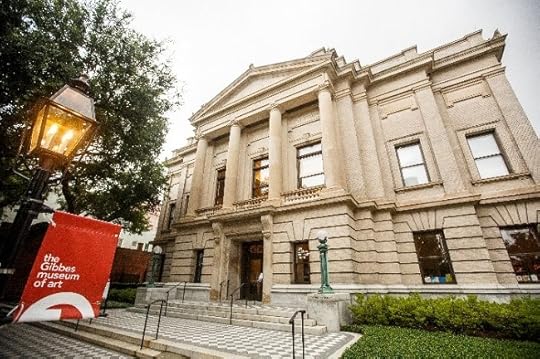 The Gibbes Museum of Art, Charleston SC
The Gibbes Museum of Art, Charleston SC
A New Take On World | The Beatroot Road: Underground Roots (Independent / 11 October 2024)
The Beatroot Road: Underground Roots
(Independent / 11 October 2024)
Underground Roots is the very first release from The Beatroot Road, an ensemble with an adventurous sense of musicality. It's a single that hints of much more to come, written by Demmy James, ‘Apes’, (active in London in the '80s) and The Beatroot Road.
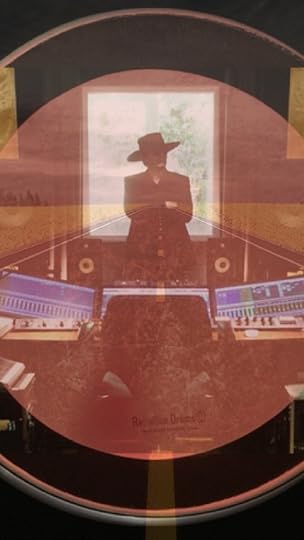
Alternative/World is the label the release notes give for the musical genre of The Beatroot Road. It's about as good a moniker as any.
The song's bouncy and fun, with an irrepressible groove that draws from various global beats. Classic Afro-Caribbean rhythm guitar blends seamlessly with jangly riffs, over a kinetic polyrhythmic beat.
Lyrically, underneath the danceable rhythms is a message about the resilience of roots to hold on and survive the many changes that take place during the seasons.
“So if you wonder how the underdog can manage a grin, it’s cos the roots are underground and the blood moves within.”
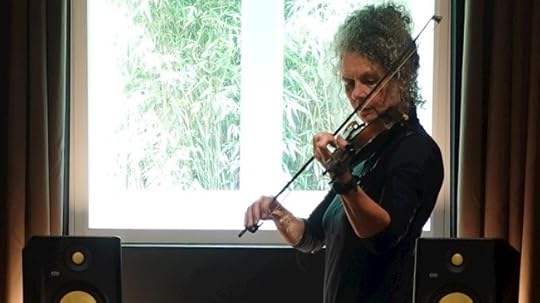 The Band
The BandMark Russell is the leader of the North Vancouver based project, alongside violinist Hazel Fairbairn. Their plan is to release a series of singles that will lead up to their first album in 2025.
The project was conceived during the pandemic lockdowns. All the works have beats at their core, and a mix and match attitude towards musical genres.
Mark comments in a statement, “If asked what it is, I like to call it music for dancing, but I’ve heard it called other things, some quite kind, some not so much. That’s enough for me. 'The Beatroot Road' describes what it is; this is just where we are right now on the journey.”
Russell spent some of his early years in Khartoum in the Sudan, followed by Scotland, where he learned African and Caribbean styles of music alongside classic rock drumming.
Hazel Fairbairn switched to Celtic fiddle from early classical training, and wrote her PhD on Irish pub music at Cambridge University in the UK. She went on to study Indian, Romani and Cajun fiddling with masters.
Russell plays percussion on the track, incorporating several traditional instruments from the African continent, such as the conga and cabassa, along with the bodhrán, a traditional Irish drum. He also plays bass, guitar and synth.
 Vocalist Lucinia Karrey, photo by Mark Russell
Vocalist Lucinia Karrey, photo by Mark RussellThe other collaborators and contributors for the forthcoming album are seasoned international session musicians and artists with roots in Austria, Canada, China, Kenya, Korea, Moldova, Nigeria, Punjabi, Türkiye, UK, USA, and Venezuela. ...so far.
Kenyan vocalist Lucinda Karrey joins them for Underground Roots, along with Nigerian singer Fuki Anditi on backing vocals.
The video features 3D animation from Griang and Mesut C. from Türkiye, with live footage of Lucinia shot in Kenya.
While Underground Roots has a distinctly African and Latin vibe, that won't be the only musical mode for the group... more surprises to come.
Websites:
Official Website: www.thebeatrootroad.caFacebook: https://www.facebook.com/TheBeatrootRoad/TikTok: https://www.tiktok.com/@the.beatroot.road?lang=en Instagram: https://www.instagram.com/The_Beatroot_RoadA New Take On WorldThe Beatroot Road: Underground Roots(I...
The Beatroot Road: Underground Roots
(Independent / 11 October 2024)
Underground Roots is the very first release from The Beatroot Road, an ensemble with an adventurous sense of musicality. It's a single that hints of much more to come, written by Demmy James, ‘Apes’, (London '80s) and The Beatroot Road.

Alternative/World is the label the release notes give for the musical genre of The Beatroot Road. It's about as good a moniker as any.
The song's bouncy and fun, with an irrepressible groove that draws from various global beats. Classic Afro-Caribbean rhythm guitar blends seamlessly with jangly riffs, over a kinetic polyrhythmic beat.
Lyrically, underneath the danceable rhythms is a message about the resilience of roots to hold on and survive the many changes that take place during the seasons.
“So if you wonder how the underdog can manage a grin, it’s cos the roots are underground and the blood moves within.”
 The Band
The BandMark Russell is the leader of the North Vancouver based project, alongside violinist Hazel Fairbairn. Their plan is to release a series of singles that will lead up to their first album in 2025.
The project was conceived during the pandemic lockdowns. All the works have beats at their core, and a mix and match attitude towards musical genres.
Mark comments in a statement, “If asked what it is, I like to call it music for dancing, but I’ve heard it called other things, some quite kind, some not so much. That’s enough for me. 'The Beatroot Road' describes what it is; this is just where we are right now on the journey.”
Russell spent some of his early years in Khartoum in the Sudan, followed by Scotland, where he learned African and Caribbean styles of music alongside classic rock drumming.
Hazel Fairbairn switched to Celtic fiddle from early classical training, and wrote her PhD on Irish pub music at Cambridge University in the UK. She went on to study Indian, Romani and Cajun fiddling with masters.
Russell plays percussion on the track, incorporating several traditional instruments from the African continent, such as the conga and cabassa, along with the bodhrán, a traditional Irish drum. He also plays bass, guitar and synth.
 Vocalist Lucinia Karrey, photo by Mark Russell
Vocalist Lucinia Karrey, photo by Mark RussellWhile Underground Roots has a distinctly African and Latin vibe, that won't be the only musical mode for the group.
The other collaborators and contributors for the forthcoming album are seasoned international session musicians and artists with roots in Austria, Canada, China, Kenya, Korea, Moldova, Nigeria, Punjabi, Türkiye, UK, USA, and Venezuela. ...so far.
Kenyan vocalist Lucinda Karrey joins them for Underground Roots, along with Nigerian singer Fuki Anditi on backing vocals.
The video features 3D animation from Griang and Mesut C. from Türkiye, with live footage of Lucinia shot in Kenya.
Websites:
Official Website: www.thebeatrootroad.caFacebook: https://www.facebook.com/TheBeatrootRoad/TikTok: https://www.tiktok.com/@the.beatroot.road?lang=en Instagram: https://www.instagram.com/The_Beatroot_RoadArt & Culture Maven
- Anya M. Wassenberg's profile
- 5 followers



